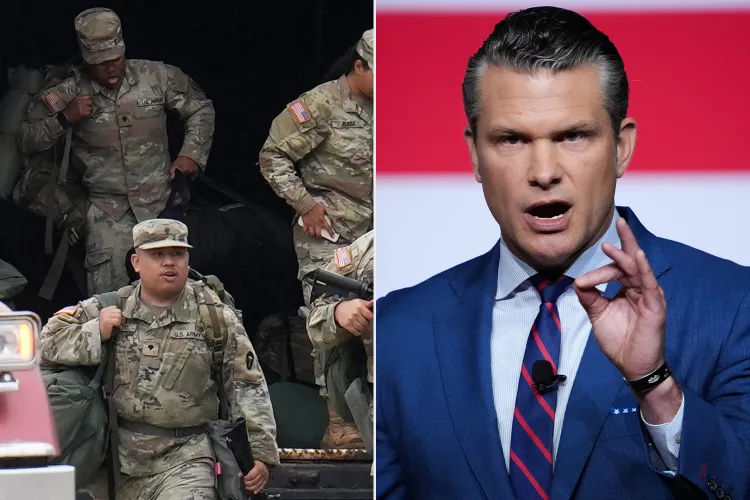After Photos Spark Backlash, Texas Recalls Some National Guard Members for Failing Fitness Standards — Pete Hegseth Praises the Move as “Standards Are Back”
A photo went viral, and within days, lives changed. Nearly 200 Texas National Guard members had been sent to Chicago to support a federal mission tied to immigration enforcement. But as images surfaced showing several of the troops appearing overweight, scrutiny exploded online. What followed was a swift reaction: the Texas Military Department confirmed it had removed a “small group” of Guardsmen who failed to meet the military’s required standards. They were sent home and replaced. The change was publicly cheered by Defense Secretary Pete Hegseth, who declared, “Standards are back at The @DeptofWar.”

It wasn’t just a headline. In statements to media, the Texas Military Department said that because of the rapid deployment, troops were validated during the mission preparations. In that concurrent screening process, they flagged members who were out of compliance. Those individuals were replaced before full operations began. The National Guard Bureau reinforced that its soldiers and airmen must always meet service-specific height, weight, and fitness requirements.
Some reports have put the number of recalled troops at seven, up from earlier accounts of four. The image that sparked the reaction showed several Texas Guardsmen arriving at a U.S. Army Reserve Center in Illinois — some carrying extra weight, according to observers and social media critics. The controversy quickly ignited debates over physical standards, readiness, and fairness within the armed forces.

The situation is layered. On one hand, ignoring mission readiness and fitness standards risks undermining morale, safety, and public confidence. On the other, the speed of the deployment may have left less time for traditional qualification checks, allowing some troops through who might not have fully met all criteria. The Texas Military Department implied as much by noting that their fast response necessitated concurrent validation — meaning standards were being checked even as the operation began.
Pete Hegseth, who has long been outspoken about fitness within the armed forces, used the event to reinforce his message. He had recently criticized what he called a “lowering of expectations” across the military and announced a new push for accountability and discipline. After news of the recalls broke, Hegseth posted on social media celebrating the move, calling it a sign that the military was returning to the high bar it once held. His words — “Standards are back” — quickly went viral and were both praised and criticized. Supporters saw it as a necessary correction; critics called it body-shaming and questioned whether appearance alone determines readiness.

What this moment reveals goes beyond one mission. It touches on the broader question of image, discipline, and respect for service members. While some see the recall as essential to restoring credibility, others argue that fitness standards should account for performance, not just physical appearance. For the soldiers involved, it was an abrupt and public lesson in how quickly judgment can spread in the age of viral photos and politics.
For the institution itself, the controversy is a reminder of how public perception can shape policy. Military leadership is now navigating a balance between maintaining discipline and showing compassion for the human side of service — a side that involves long hours, deployments, and sometimes, real struggles with health and fitness.
In the end, the message sent by Texas was clear: standards will be enforced. Whether that restores confidence or deepens division depends on how the story evolves — and how the military treats the people behind those viral images, not just the image itself.



